OBS Engine RTA Review
The OBS Engine is a new 25mm RTA that claims to solve probably the biggest problem plaguing RTAs right now – leaking. The Chinese company has come up with an innovative design that takes the common bottom airflow system out of the equation, and thus minimizes the risk of leaking. But that’s not the only thing going for it. The Engine has an above average e-liquid capacity of 5.2ml, as well as an ingenious top-filling system, and last but not least, it looks beautiful. In this review, we’re going to go over the pros and cons – because there are a few of those as well – and see if the OBS Engine is worth your money.
A Look at the Contents
This was the first OBS product I had ever tried, and having never even heard of this company before, I didn’t really know what to expect. The packaging was ok – a cardboard box in the manufacturer’s signature white&yellow color scheme, with a picture of the OBS Engine on the front and some specifications on the back, written in the poorest English I’ve ever seen on a Chinese product (e.g.: We ungrade the DIY base with a more huge size). Inside the box, you have the OBS Engine RTA, as well as a spare glass tube and a hex screwdriver, and, under the foam holder, you’ll find another small box containing some organic cotton and a box of goodies (spare o-rings, grub screws and two really nice twisted wire coils). Oh, and I almost forgot to mention that the user manual is one of the best I’ve ever seen. The English instructions are pretty bad, but it comes with very detailed pictures that show you exactly what you need to do to set it up and clean it.
The first thing that really impressed me about the OBS Engine was the eye-catching design. This RTA really is a thing of beauty, in my opinion, especially if you’re into big, bulky tanks. The Engine measures 25mm in diameter and is 54.5ml tall. It weighs 42 grams and holds up to 5.2ml of juice. It’s a big boy, by anyone’s standards, but with all these high-power devices and advanced coil builds becoming so popular among advanced vapers, they are becoming the norm. But in the case of the OBS Engine, big definitely doesn’t mean unappealing. From the conical Delrin drip tip and the raised top airflow control ring, to the ‘OBS’ logo and artistic plane propeller icon on the chimney, this thing thing is definitely one of the best-looking tank atomizers I have ever used.
Setting Up
To get the OBS Engine ready for your first vape, the first thing you have to do is take it apart and give it a good wash to get rid of any machining oil. Start by unscrewing the base, then do the same with the top section, and, finally, remove the glass tube from the metal cage on the inside. You can also pull off the drip tip and wash it separately, or replace it with your favorite 510 drip tip. The only thing I don’t like when taking apart the Engine is that the elaborate chimney is press-fit onto the top section so I can’t clean it as well as I’d like to. This is a pretty big deal to me because e-liquid – either raw or vaporized – does tend to build up on the chimney after a while.
Once you’ve cleaned the RTA, it’s time to mount the coils. I personally used the included twisted wire coils, and I’ve been pretty happy with them so far. They have a combined resistance of just 0.15Ω, so if you don’t have a powerful enough mod, or if you’re not into ultra-low sub-ohming, I suggest you just use one, or build your own coils. Anyway, the OBS Engine has a really nice Velocity style build deck, which makes fitting and fastening the coils a breeze. If you haven’t heard about this deck before, you’ve either been living under a rock for the last couple of years, or you’re just not ready to use such a device. Otherwise, you already know how good this type of deck is, so I’m not going to go into details.
As with any other RTA, wicking the cotton after mounting the coils is essential to an enjoyable vaping experience, and because of the specific design of the OBS Engine, it’s even more important when using this device. The Engine doesn’t have any kind of bottom airflow. Instead, the air comes through the three top airflow slots, travels through two side air channels, hits the coils and goes back through the chimney, into your mouth. This prevents bottom leaking and is supposed to enhance the flavor of the vapor, but it also exposes you to some really annoying issues, if you don’t wick your coils perfectly. And I do mean perfectly!
The Velocity deck is fused to the bottom of the RTA, which also serves as the juice well. The deck features four large wick holes, and you want the ends of your leads to go through these holes and reach the juice. However, you want to make sure that the wicks are thick enough to seal the holes and prevent the coils from flooding, yet loose enough to allow the juice to travel all the way up to the coils. The length of the leads is also critical. Cut them too short and the build deck will get flooded after you fill the tank, but leave them too long and they won’t wick the juice as well as they should and you’ll experience nasty dry hits. Some people care most about preventing flooding, so they leave the cotton wicks long enough to reach the bottom of the juice well, but I, for one, want them to go through those four wicking holes just a little, to make sure the e-liquid travels freely all the way up to the coils.
Wicking this thing is tricky, especially if you don’t have much experience with RTAs, and you probably won’t get it right the first time. But if you have the patience, you can definitely make it work. I’m living proof of that.
Once you’re done with the wicking, it’s time to put the OBS Engine back together. It’s a fairly straightforward affair, except for one very important detail. You’ll notice that the bottom end of the chimney features two small metal notches, and you want to align those with the two small slots on the base of the RTA before screwing them together, otherwise they won’t fit. That’s actually an ingenious lock that ensures that the coils are properly aligned with the air shafts so that air hits them directly when you draw. It does make assembling the Engine somewhat of a pain in the butt, if you don’t align the two pieces correctly, though.
Finally, once the RTA is reassembled, you just have to fill it up with juice. OBS uses an ingenious hidden fill port that you access by pulling up the top section of the Engine, the one that has ‘OBS’ written on it. That will reveal a huge fill slot that accommodates any type of dropper or bottle. It’s a pretty unique design, but it does have one drawback. It seems that juice or condensation tends to build up on the inside of the ring, so when you refill and slam that metal ring back down, you’re going to have some juice pressed out every time. It’s not a huge deal, but if you don’t wipe it off, it can get messy.
How It Vapes
My first experience with the OBS Engine was so terrible that I was seriously considering not doing this review at all. I thought I had set it up just right, but the spit-back from that very first draw was so bad that I had rinse my mouth. And unfortunately, trying to vape on it again only made things worse, as more hot juice traveled up the chimney and into my mouth. Something was definitely wrong.
Here’s the thing about the internal design of the OBS Engine. The fact that it doesn’t have bottom airflow slots means that there is no leaking through the bottom of the RTA, but it also means that the only place for excess juice to go is into your mouth. That’s just how this system works. However this only happens if you don’t wick the Velocity deck just right, which probably the vast majority of vapers will fail to do on their first try.
From my previous experience with RTAs, I had learned that you shouldn’t stuff the wicking slots with cotton, as that increases the risk of dry hits. Instead you should just make sure they are sealed. So I cut my leads to the point where they reached the four holes in the deck, but didn’t go all the way through them completely. It seemed like it would work, but it turned out to be a bad idea. The deck got flooded, and every time I took a hit, it would just gurgle and send hot droplets of juice up the chimney and into my mouth.
Luckily, I got the wicking right on my second try, but not before taking the tank apart with the juice still inside and getting lost of it on my hands in the process, There is really no way to disassemble the OBS Engine without first draining the juice – which is not the easiest thing in the world – because setting it upside down will just cause e-liquid to leak through the top airflow system and the drip tip. So I’d recommend not filling it up completely the first time, to minimize juice waste.
Anyway, after rewicking the coils, making sure that the leads wen all the way through the deck slots, the vaping experience improved greatly. I still got a a bit of gurgling on my first two draws, but it’s been smooth sailing ever since. No leaking whatsoever, no spit-back, and no dry hits. That’s awesome, and, to be honest, I appreciate all these things even more after that awful first experience.
The three large air slots on the top of the OBS engine provide plenty of airflow, the vapor production is not the best I’ve ever gotten from a tank, but it’s definitely above average, and the flavor is to die for, thanks to the that ingenious system that guarantees that the air if hitting the coils directly and then carries the flavorful vapor all the way to your mouth.
One final thing I would like to mention is that even though the 0.15Ω resistance of the coil theoretically support a power output above 100W, anything above 110W mutes the flavor, as the cotton tends to struggle to deliver enough juice to the coils fast enough. My sweet spot is at around 80W – 90W, but if you prefer hotter vapor, I’m not entirely sure that the wicking system of the OBS Engine can support that kind of extreme power output.
Conclusion
The OBS Engine is an intriguing RTA with some undeniable qualities. The leak-proof design is probably its main draw, but the overall aesthetics, large e-liquid capacity and intense flavor are not be ignored either. However, it’s not as user-friendly as other similar devices, and anything but a perfect wicking job will result in a terrible vaping experience. If you think you’re experienced enough, I definitely recommend you give it a try, especially since it only costs $29.99, but if you’re looking for your first RTA, I don’t think this is the right choice.
Thank you to our partners at Heaven Gifts for sending us the OBS Engine RTA free if charge, for the purpose of this review!

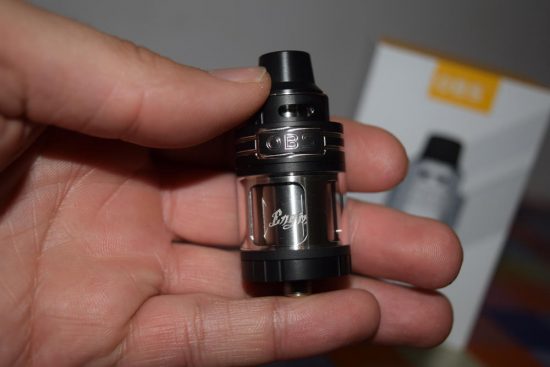
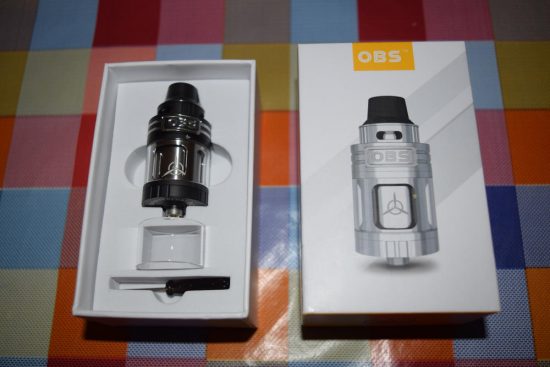
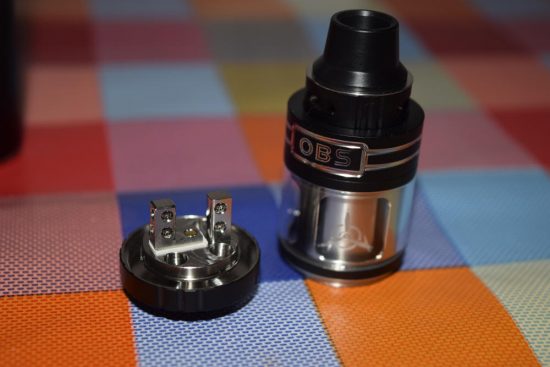
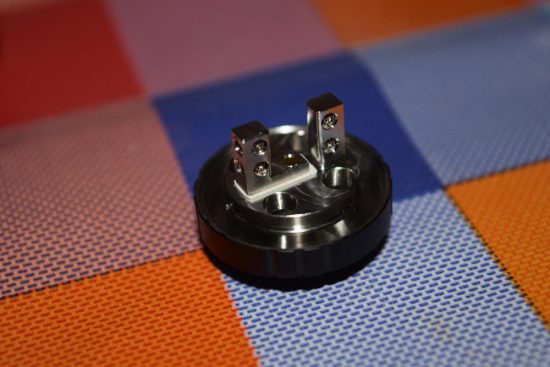
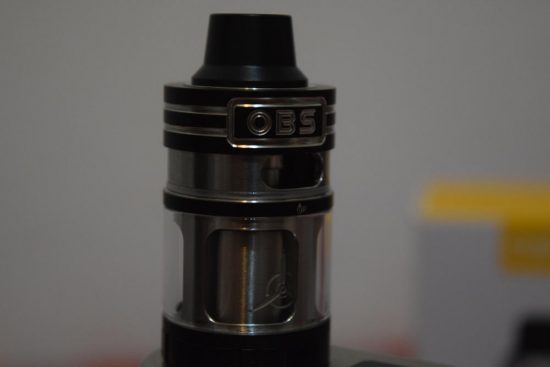
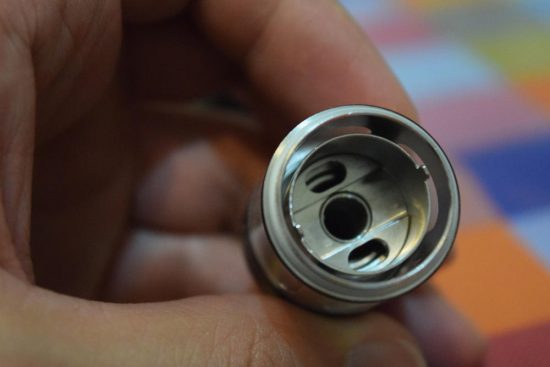
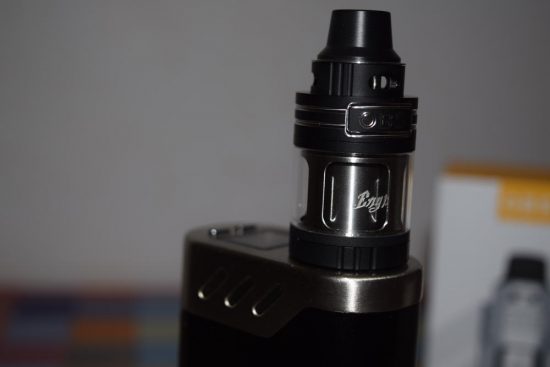
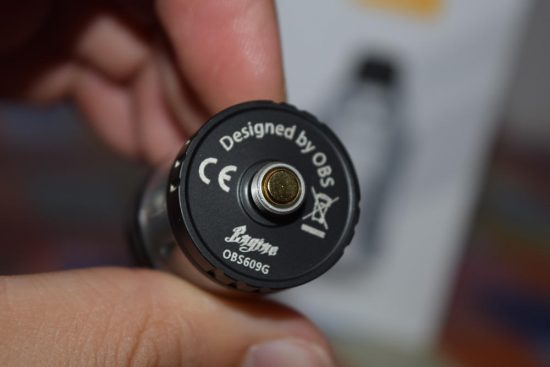
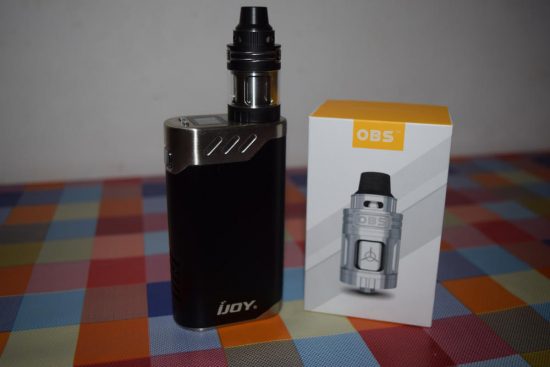
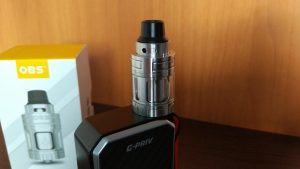
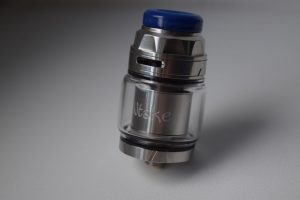
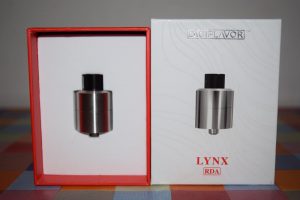













Really good review but I can’t agree with upside down part. I do this always when I rebuild coils and no leaks at all. Maybe is something wrong with your Engine mate
The only 2 issues I so far have with it is that you need to completely empty the tank before taking the deck out. Also it is a bit difficult to fit the 2 studs into their corresponding slots when assembling the tank. Pins and holes would have been a better idea. Doesn’t leak, this seems to be the perfect tank for outdoors, the only downside is the volume is rather small. But as someone who simply had it with bottom airflow RTAs (every single one I had leaked) I would take smaller tank over leaking large tank any day. I would love to see this great design improve even more in the future with larger tank volume, slightly larger deck and easier to use interlocking pins for the chimney to fit the base of the tank.
My experience thus far has been great…first mistake i made on first build was to use supplied coils…all wrong for wattage and size…drained my.batteries at least one pint in every git on my old Sigelei. Went with my regular build for my dripper..26g Kanthol with 8 wraps on 3 ml. Wicked with a little bit “filling the holes” but nit to the bottom… somewhere in between, and not to tight through the coils..unbelievable flavor AND huge clouds on 70/30…i prefer 80/20…great bang for the buck if you have the patience to do YOUR build, and DONT use the supplied coils, unless you use those types all the time…too much variance, and if your dripper coils work well, use the dame build..its all good.
So far my best investment, except for the fact that this things EATS JUICE..YUP!!!!
hello, to anyone still having a problem with their wicking ill tell you my secret to getting the perfect wick, i use the smallest flat head screwdriver i can find, usually from a precision screwdriver set, and holding my finger under the end of the cotton so it cant move, i gently pull the screwdriver through the cotton from about half way between coil and end of cotton, i feather the entire top pulling out extra strands or thick spots with the screw driver and when i worked my way across the top, i pull off the excess that i just made loose, and then i flip the rta upside down so i can do the same to the underside of the cotton, now you only want to feather the cotton to the point that there is 0 compression going through the wicking ports, the cotton still fills the hole but it does not get compressed by the hole at all, this takes a few tries to get used to, as to much you have to start again, not enough then you still have to try again, but once you get this method down ( it works for all rta ) you can chain vape at any wattage and not get a dry hit, i hope this helps anyone else as it has helped me tremendously